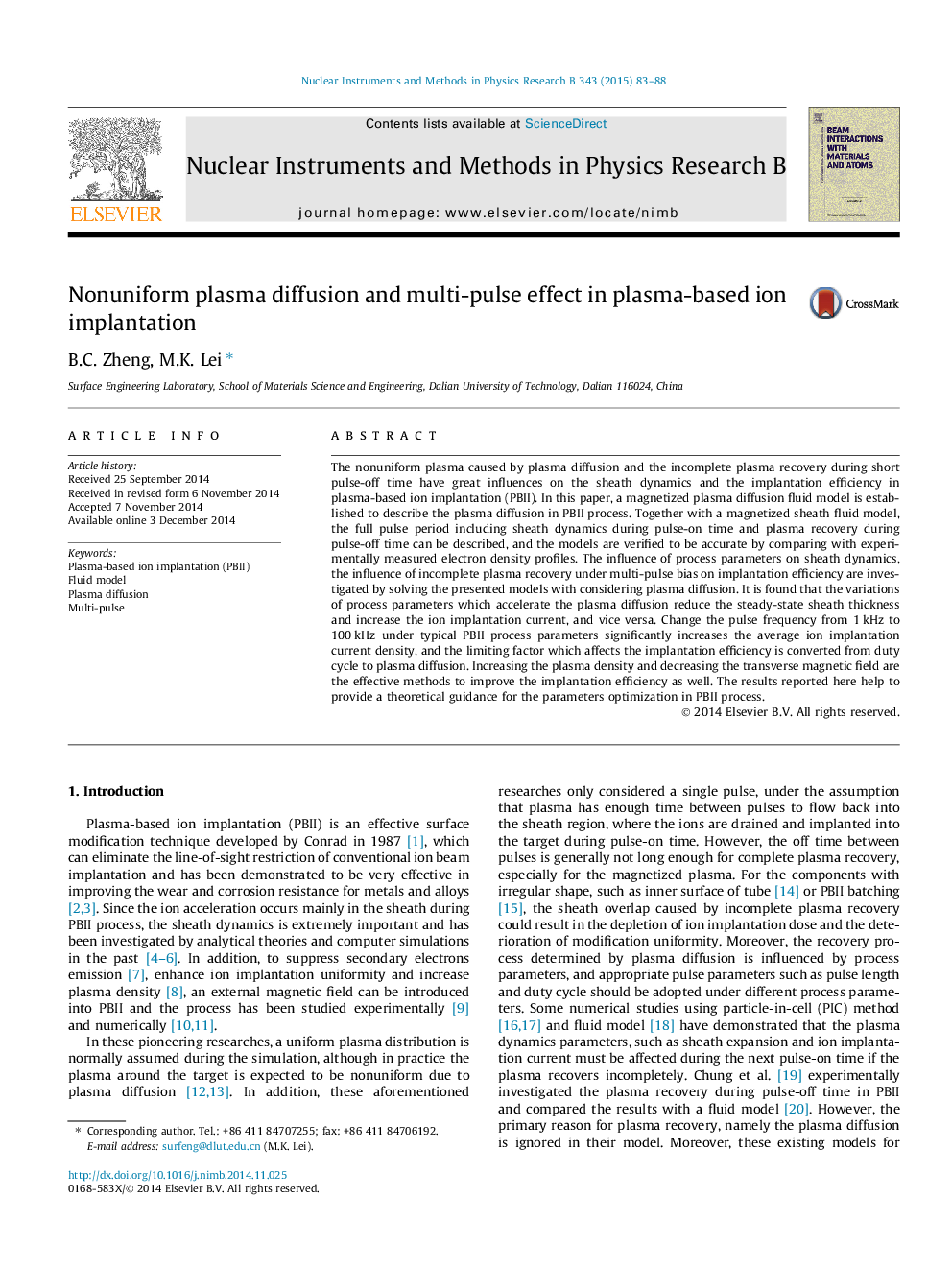| Article ID | Journal | Published Year | Pages | File Type |
|---|---|---|---|---|
| 1680728 | Nuclear Instruments and Methods in Physics Research Section B: Beam Interactions with Materials and Atoms | 2015 | 6 Pages |
•Fluid models describe the plasma dynamics during a full pulse period in PBII process.•Validity of the fluid models is identified by measured electron density profiles.•Influence of process parameters on nonuniform plasma diffusion is demonstrated.•Implantation parameters are optimized for high efficiency using multi-pulse biasing.•Pulse frequency, plasma density and magnetic field are the main effect factors.
The nonuniform plasma caused by plasma diffusion and the incomplete plasma recovery during short pulse-off time have great influences on the sheath dynamics and the implantation efficiency in plasma-based ion implantation (PBII). In this paper, a magnetized plasma diffusion fluid model is established to describe the plasma diffusion in PBII process. Together with a magnetized sheath fluid model, the full pulse period including sheath dynamics during pulse-on time and plasma recovery during pulse-off time can be described, and the models are verified to be accurate by comparing with experimentally measured electron density profiles. The influence of process parameters on sheath dynamics, the influence of incomplete plasma recovery under multi-pulse bias on implantation efficiency are investigated by solving the presented models with considering plasma diffusion. It is found that the variations of process parameters which accelerate the plasma diffusion reduce the steady-state sheath thickness and increase the ion implantation current, and vice versa. Change the pulse frequency from 1 kHz to 100 kHz under typical PBII process parameters significantly increases the average ion implantation current density, and the limiting factor which affects the implantation efficiency is converted from duty cycle to plasma diffusion. Increasing the plasma density and decreasing the transverse magnetic field are the effective methods to improve the implantation efficiency as well. The results reported here help to provide a theoretical guidance for the parameters optimization in PBII process.
